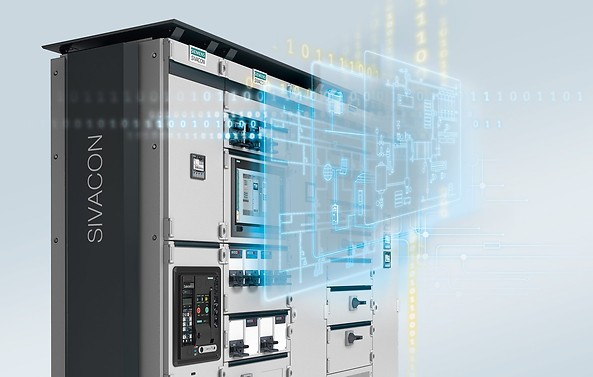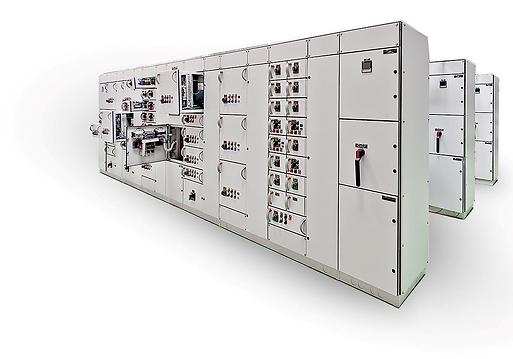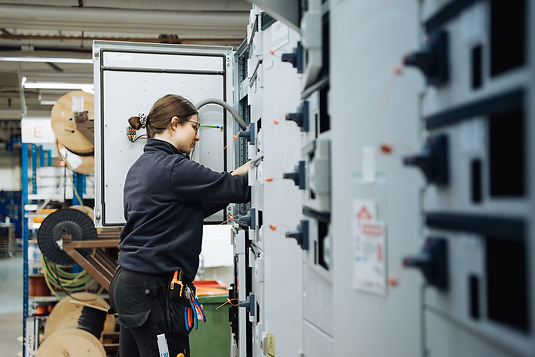In our surroundings, we come across devices and appliances that rely on electricity. Within industrial settings, systems such as heating, ventilation, lighting, and machinery require electrical power to operate. Serving as the epicenter of power distribution for these electrical loads are diverse control panels, including distribution switchgears and motor control centers, complemented by other power distribution assets like transformers and industrial control panels.
Electric motors necessitate power supply and control for their operation. While simpler versions involve equipment for motor start and stop, often the demands surpass these basics. A Motor Control Center (MCC) encompasses a cluster of assorted starting components housed in a shared unit. This assembly comprises one or more incoming protected feeders channeling power to collection rails that traverse the entire unit. Enclosed compartments within the unit house outgoing groups where specific loads receive their power supply and control. An outgoing group might entail multiple elements like switches, fuses, push buttons, lights, in addition to data communication and measurement devices. All these components align with the function assigned to the outgoing group. The design also features sections for external connections, fuses catering to lighter loads, and segments designated for measurement. The diversity is extensive, unlocking numerous potential applications.
Motor Control Centers (MCCs) find utility in various domains:
Power Generation: Within power generation, they assume roles in controlling and managing diverse auxiliary systems for gas turbines, encompassing lubricating oil pumps, fuel pumps, ventilation fans, and heaters.
Maritime: For maritime applications, they govern pump motors, compressors, and auxiliary systems.
Mining: In mining, they power sorting systems and ventilation.
Industrial Machinery: For industrial clients, Motor Control Centers regulate the distribution and control of production lines, conveyors, cranes, lifts, and more.

Elektromontage AB is a licensed partner to Siemens with authority to sell, design, manufacture and deliver Siemens Sivacon switchgear to our customers.
In the process we add value by our market knowledge and our flexibility to adapt to the customers specification sometimes late in the process where close collaboration between the customer and the manufacturing process is crucial for success. The partnership with Siemens has also been an advantage in terms of customer feedback and design improvements.
Siemens Sivacon is a switchgear with a high degree of standardization suitable for industrial applications.

Elektromontage AB has a partnership relation with Cubic. This partnership gives us the ability to offer and deliver very flexible switchgear systems in terms of space and application. The system is designed around modules that easily can be adapted.
Cubic fit well into our product portfolio and can be configured in many ways which gives us advantages compared to more traditional switchgear suppliers.

With over five decades of experience, Elektromontage crafts, manufactures, delivers, and installs comprehensive control panels tailored to industries and machinery applications. Our profound expertise spanning design, project management, production, and installation of MCCs equipped with project-specific requisites instills confidence among our clientele.
We can offer an unique mix of switchgears meeting various specifications both standardized and adapted solutions with our licensed hardware Siemens Sivacon S8 and Cubic.
Our focus is on switchgears for industrial and /or machinery applications high requirements on safety, availability, reliability and degree of automation.
Switchgear plays a critical role in the distribution of electricity, acting as a central hub in the power network. These advanced systems distribute electricity from power plants to different parts of the network, adjust the current to specific needs, and ensure uninterrupted access to electricity. In situations that require interruptions or rerouting in the power network, such as for maintenance or in the event of faults, the switchgear is essential for safely and efficiently controlling these processes.
The term "switchgear" comes from its function to "set up" or control the flow of electricity through the power network. This system is equipped with various components such as circuit breakers, fuses, and switches that work together to control, protect, and monitor the distribution of electricity. Its ability to efficiently manage and isolate electrical equipment makes it indispensable for maintaining the integrity and safety of the power network. At Elektromontage, we understand the importance of robust switchgear and therefore offer customized solutions that meet the specific requirements of each project, further reinforcing our position as a reliable partner in electrical installation and energy management.
A switchgear is a technically complex facility designed to handle and control electrical currents. Visually, it often consists of a collection of cabinets and panels that contain various electrical components such as switches, relays, transformers, and fuses. Each part plays a crucial role in ensuring a reliable power supply and protection against overloads or faults in the power network. Switchgears can vary in size and configuration depending on their area of use – from compact units in industrial settings to large outdoor facilities that distribute power to and from power plants. At Elektromontage, we specialize in designing, installing, and maintaining switchgear that not only meets the highest standards for safety and performance but is also customized to meet our clients' unique needs and conditions. Through careful maintenance and expertise, we ensure that each switchgear we work with maintains its functionality and reliability over time.
A switchgear is an integral part of the power network and contains a range of critical components that together ensure the efficient distribution and control of electricity. A switchgear includes incoming and outgoing cabling that handles electricity at various voltage levels. Additionally, switchgears typically feature load disconnectors, fuses, relay protection, and circuit breakers to effectively protect and control the power network. Each component in a switchgear plays a vital role in ensuring a stable and safe power supply, and at Elektromontage, we are experts in designing, installing, and maintaining these systems to meet our clients' unique needs.
The construction of a switchgear is a carefully planned structure where incoming and outgoing electrical lines are connected to one or more central busbars. Each connection point, known as a bay, represents a section of the switchgear and can be equipped with various devices such as load disconnectors with fuses or circuit breakers combined with disconnectors. These devices allow selective coupling of specific wires or components, facilitating flexible control and maintenance of the power network. By leveraging our expertise at Elektromontage, we design switchgears that not only optimize electricity distribution and safety but also maximize operational reliability and efficiency in our clients' facilities.
A motor control center (MCC) generally has a life expectancy of around 20 years. However, durability depends on maintenance practices, environmental factors, and operational demands. Regular upkeep and optimal operating conditions can extend its lifespan, while neglect or harsh conditions may shorten it.
A Variable Frequency Drive (VFD) is a specialized device that adjusts the speed of an AC motor by modifying the frequency of the electrical supply, enabling precise control over motor operation for increased efficiency and reduced energy consumption. In contrast, a Motor Control Center (MCC) is a comprehensive assembly housing multiple sections with control and protection components for managing multiple electric motors in industrial settings. While VFDs can be part of an MCC, MCCs provide broader control, protection, and centralized management for various motors across a facility.
The purpose of a Motor Control Center (MCC) is to centralize the control, monitoring, and protection of multiple electric motors in industrial and commercial facilities. By housing motor starters, overload protection, and Variable Frequency Drives (VFDs) in a single unit, MCCs streamline motor operations, increase safety, and simplify maintenance. MCCs are essential for ensuring efficient motor performance, reducing downtime, and enhancing the operational control of complex systems in industries like manufacturing and energy.
Motor Control Centers (MCCs) and switchgear serve different purposes within electrical systems. MCCs are designed primarily for controlling and protecting multiple electric motors, with frequent operation aligned with process needs. They typically contain motor starters, overload protection, and control devices. Switchgear, however, is primarily focused on power distribution and protection for an entire electrical system, containing breakers and disconnects, and is operated less frequently. Both are essential for industrial applications but serve distinct functions in power control and distribution.
An MCC bucket is a modular metal enclosure within a Motor Control Center (MCC) that houses the control components for an individual motor, such as starters, fuses, circuit breakers, and sometimes Variable Frequency Drives (VFDs). These buckets are removable, allowing for easy maintenance and replacement without disrupting the entire MCC. MCC buckets are essential for efficient power control, protection, and distribution in industrial environments, supporting flexible and reliable motor management.